|
Visit
to Central Chile
12th - 20th December 2009 |
|
Visit
to Central Chile
12th - 20th December 2009 |
TRIP ACCOUNT OF OUR VISIT TO CENTRAL CHILE, WITH BIRD PHOTOS
I hereby present an photo-account of a week-long visit to central Chile, travelling from Buenos Aires, wehere we live. The main purpose was to see birds and get some photos of them. Travelling with my wife, we drew up the following basic guidelines:
- Minimize the number of places we were to stay at.
- Try and avoid the heat.
- Travel by plane (taking advantage of free "miles") and renting a car for the duration of our stay.
This was the planned itinerary, which we kept to:
- Leave BA on the 12th December. Flight over the Andes, arrive at Santiago, hire car and drive to our first destination.
- 4 nights (3 net days) at the Cajón del Maipo, SE of Santiago, to see the birds of the high-Andean valleys, visiting El Yeso.
- 1 stopover at Quintero, on the Pacific coast. On our way here we were to spend the morning in the mountains at Farellones, NE of Santiago.
- Next day visit Cachagua and Reñaca to get some coastal birds. Then through Viña del Mar back to Santiago, and onward south to reach our next destination at Vilches, east of Talca.
- 3 nights (2 net days) at Vilches to get some of the nothofagus forest birds.
- Return to Santiago on the 20th December to get our plane back to Buenos Aires.
So, basically we did an ample counter-clockwise circuit around Santiago.
Following is are more detailed account and photos of the places and birds.
Many thanks for visiting this page - Alec Earnshaw
Main site portal: www.fotosaves.com.ar
Equipment used
1) "Bridge" camera:
Panasonic Lumix FZ30 with x1.7 teleconverter + Vivitar 285HV flash
2) Digiscoping and videoscoping equipment:
Telescope: Vixen Geoma II ED 67mm, angled + x20 Wide eyepiece
Tripod: Manfrotto 190 XB with 700RC2 video head
Camera: Nikon P6000 with accesories (screen hood, mounting tube, remote control and cable shutter release)
Research material and field guides used:
- Birds of Chile - Alvaro Jaramillo. Peter Burke, David Beadle
- Essential Guide to Birding in Chile - Mark Pearman (author), Keith Colcombe (illustrator)
- Birds of Argentina and Uruguay - A Field Guide - Tito Narosky & Darío Yzurieta
"Digiscoping in the High Andes" - foto: María Elena Earnshaw
DAY 1 - Arrival at Santiago airport. After pickig up the car we drove to our first "base camp", a 2-hour trip along a paved road, soon getting dark, and arriving at about 10 pm. We took the Camino al Volcán, which starts in the south-eastern suburbs of Santiago, and followed up the valley of the Río Maipo towards the cordillera. This deep canyon is known as Cajón del Maipo, and provides a very convenient vehicle access to the high mountains. All along the valley is a wide selection of bungalows and hotels, and our choice was for a place that would be as far up the valley as possible so we could have quick access to the gravel roads we planned to take over the next 3 days.
Entrance to Parque Almendro where we rented a bungalow for 4 nights. We normally made our own meals in the kitchenette, but on one occasion we also enjoyed a delicious dinner at the restaurant . The bungalow and hired car. The place was very comfortable, clean, and we were very well looked after. We were lucky that the holiday season had not yet begun in earnest, so we had the whole place to ourselves. It has an excellent pool (which we didn't use), and the grounds border the torrential Maipo river, that can be heard roaring day and night.
Address: Camino al Volcán 38.713 - km 53 Cajón del Maipo.
Tel: (56 2) 861 2301 Celular: (56 9) 225 6105
http://www.parquealmendro.cl/
The hire car was a Suzuki Grand Vitara Mini 4x4 (fixed). Many assured us that a 4x4 was not needed, but without one we might have refrained from crossing some fords, and that would have impacted the bird count. The melting snow had turned small streams into little torrents.
Common birds around the bungalow were: Common Diuca-Finch, Austral Thrush, White-crested Elaenia, Rufous-collared Sparrow and California Quail. We were told we should see Moustached Turca and Pygmy-Owl, but dipped these here.A view of the Río Maipo 1 km upstream from Parque Almendro. Apart from the trees and bushes, the vegetation on the far bank consists mainly of tall cacti.
DAY 2 - Drive up the El Yeso river, one of the tributaries of the Maipo. We would spend our first day doing the most exciting excursion of the trip, as it would yield many new mountain birds: Miners, Ground-Tyrants, Sierra-Finches and others, that I hoped to see and photograph. Weatherwise we had an exceptional day. Being a Sunday one would normally expect to have many tourists from Santiago, but on this day the national presidential elections were being held, so we hardly saw a vehicle! Mining activities in the area imply meeting many trucks along the narrow roads, but we were also very fortunate at El Yeso as activities had been suspended this year. This day we reached the 15.5 km mark above the El Yeso dam.
DAY 3 - After an easy-going morning and visiting a nearby town to shop for provisions, we set off after midday up the other tributary, passing Lo Valdes and reaching La Colina hot springs. Along this road we saw some of the same birds as on the previous day and met up with the mining activity.
On DAY 4 we repeated the same drive as on DAY 2, but extending to about 20 km beyond the El Yeso dam, nearly making it to the El Plomo hot springs.
Following are photos of the places we visited, and after that, the birds taken during these 3 days.
These are shown roughly in order of appearance, that is, of increasing altitude, but always bunching species together.
Repeat photos taken near Farellones, on DAY 5, are also bunched here, so as not to revisit the same ones later.
Tenca - Chilean Mockingbird - Mimus thenca - NEAR ENDEMIC
Chiricoca - Crag Chilia - Chilia melanura - ENDEMIC

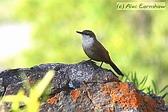
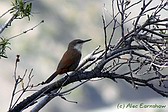
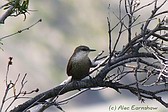
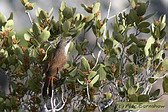
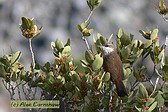
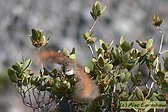

Turca - Moustached Turca - Pteroptochos megapodius - ENDEMIC
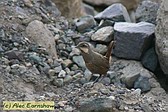
Pato de Torrente - Torrent Duck - Merganetta armata
Jilguero Grande - Greater Yellow-Finch - Sicalis aureoventris


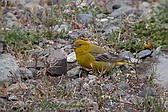
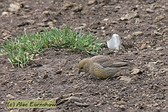
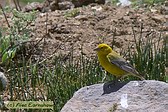
Cabecitanegro Andino - Yellow-rumped Siskin - Carduelis uropygialis
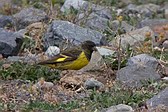
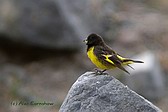
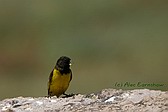
Comesebo Andino - Grey-hooded Sierra-Finch - Phrygilus gayi
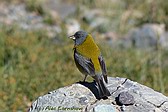

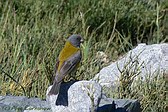
Palomita Cordillerana - Black-winged Ground-Tyrant - Metropelia melanoptera
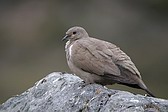
Agachona de Collar - Grey-breasted Seedsnipe - Thinocorus orbignyianus
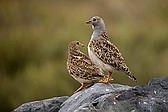
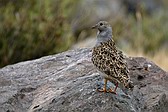

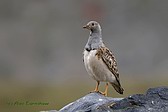
Codorniz de California - California Quail - Callipela californica

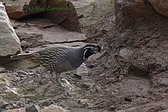
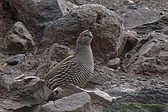
Loica Común - Long-tailed Meadowlark - Sturnella loyca
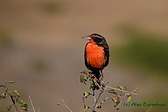
Churrín Andino - Andean Tapaculo - Scytalopus magellanicus

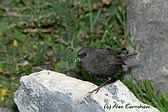
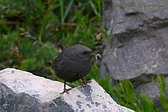
Yal Plomizo - Plumbeous Sierra-Finch - Phrygilus unicolor
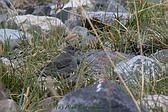
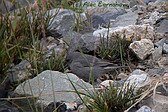
Caminera Colorada - Rufous-banded Miner - Geositta rufipennis
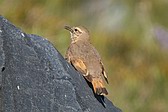
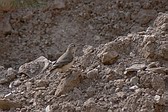
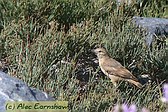

Bandurrita Común - Scale-throated Earthcreeper - Upucerthia dumetaria
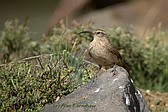
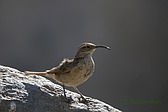
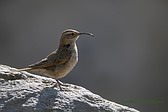
Canastero Pálido - Cordilleran Canastero - Asthenes modesta

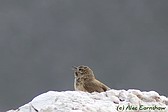

Dormilona Ceja Blanca - White-browed Ground-Tyrant - Muscisaxicola albilora

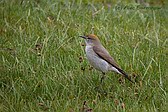
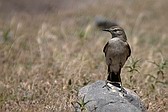
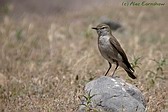
Dormilona Frente Negra - Black-fronted Ground-Tyrant - Muscisaxicola frontails
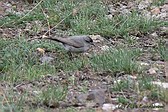
Dormilona Fraile - Ochre-naped Ground-Tyrant - Muscisaxicola flavinucha
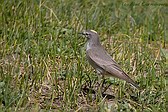
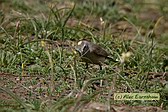
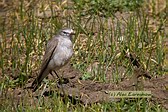
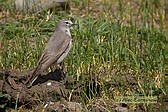
Chorlo de Vincha - Diademed Sandpiper-Plover - Phegornis mitchelli - NEAR THREATENED
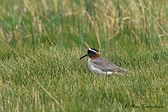
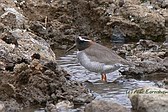
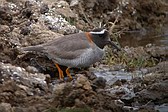
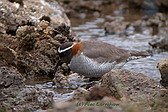
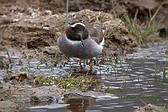
After three productive but tiring days in the Cajón del Maipo, we set off early to try and avoid the Santiago rush hour, as we needed to cross the eastern side of the city to the north-eastern corner. After Las Condes we began the climb through an attractive hilly area. We initially missed the turnoff to Farellones but thanks to that a little further on we got a great roadside view of Chilean Flicker clinging to its nest placed at a road bank. See photos, all taken from inside the car.
The steep climb to Farellones has a succession of 40 hairpin bends. We stopped 2 or 3 times and heard the endemic Dusky-tailed Canastero (Asthenes humícola) but never saw it. We took the turnoff to Valle Nevado and at the impressive cliffs that overlook the valley got photos of Mountain Caracara. We then stopped at a nearby promontory. On this lovely meadow we saw more Band-tailed Miners, Scale-throated Earthcreeper, Yellow-rumped Siskin and Black-winged Ground-Dove. We also got Black-billed Shrike-Tyrant and Band-tailed Sierra-Finch, with Andean Condors flying overhead. After lunch we descended back towards Santiago, took a modern freeway below ground, and then Route 5 north, soon turning off again for Lampa. We found the famous reedbeds to be completely dry, party due to a drought in the region but also as water that normally runs into the wetland is now being used for agriculture. On the left side of the road we saw heavy construction work, with earth movement. Apparently a foreign investor is building a golf course, and they will also "recreate" a wetland!
We continued on past Til-til, taking a lovely road through the mountains to Limache. Here the whole town was in gridlock, as raging wildfires had forced road closures and traffic was concentrating here. We lost nearly 2 hours, but finally reached Viña del Mar. We headed north, stopping quickly at Reñaca where we saw Ruddy Turnstones, then arrived by night at a cheap bungalow place in Quintero, our stay-over town for the night.
The following photos cover new bird species taken in the Farellones area.
View of the valley of the Mapocho river, as we climb towards Farellones. Carpintero Pitío - Chilean Flicker - Colaptes pitius
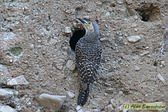
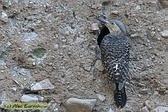
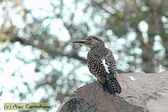
Cóndor Andino - Andean Condor - Vultur gryphus
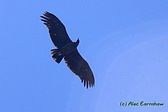


Matamico Andino - Mountain Caracara - Phalcoboenus megalopterus
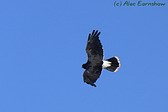

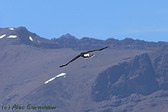
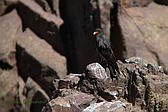
Gaucho Serrano - Black-billed Shrike-Tyrant - Agriornis montana
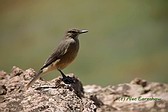

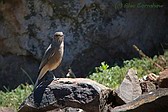
Yal Platero - Band-tailed Sierra-Finch - Phrygilus alaudinus
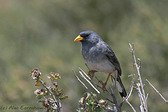
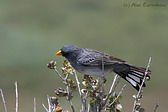
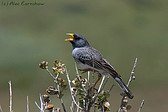
I was unsuccessful in tracking down Surfbirds in the rocky areas along the coast at Quintero. However, in the gardens close to the coast there were several Rufous-tailed Plantcutters, Black-chinned Siskins. and a Fire-eyed Ducon with chicks.
We set off towards the very elegant town of Cachagua to see the Humboldt Penguins that breed on a small island just off the coast. We parked at an access to the beach and walked to the rocky promontory to get as close as possible for digiscoping these curious sea birds that live here among tall cactus plants!
We saw small flocks of Gunay Cormorants, Peruvian Boobies, Peruvian Pelicans and Kelp Gulls. On the rocky coast were Blackish Oystercatchers and both vultures. On the beach we saw Whimbrel, Lapwings & Franklin's Gull. We also had Plain-mantled Tit-Spinetail and Seaside Cinclodes. In the gardens were Austral Blackbird, White-crested Elaenia and more plantcutters. Retuning to the car we surprised a Giant Hummingbird, which got away before getting a photo, so we spent an hour at the plaza, as we had been told they were commonly seen here. However, there was no show, but we did add Thorn-tailed Rayadito.
We rushed south to Reñaca but arrived after midday so the light was not too good for digiscoping the birds on the famous "Reñaca Rock", an outcrop used by many coastal birds. We spent an hour here while I digiscoped 4 species.
After tending to some urgent needs and a quick lunch at a Viña del Mar shopping center, we took the highway heading for Santiago, and from there headed south on the freeway to Talca, a further 250 km from the capital. We arrived here just before sunset and headed east on a paved road to Vilches, although it turned into a very dusty gravel road for the last 10 km of so . We were to stay at a bungalow in Vilches Centro for 3 nights, which would give us 2 full days to find birds that dwell in the Andean Beech (Nothofagus) forests.PHOTOS TAKEN AT CACHAGUA
Pingüino de Huboldt - Humbolt Penguin - Spheniscus humboldti
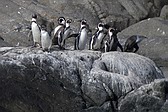
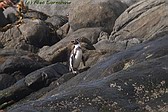
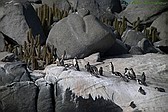
Cormorán Guanay - Guanay Cormorant - Phalacrocorax bougainvillii
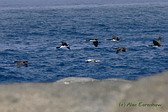
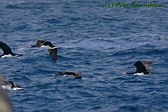
Tero Común - Southern Lapwing - Vanellus chilensis
Playero Trinador - Whimbrel - Numenius phaeopus (hudsonicus)
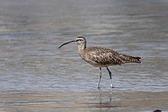
Gaviota Cocinera - Kelp Gull - Larus dominicanus
Ostrero Negro - Blackish Oystercatcher - Haematopus ater
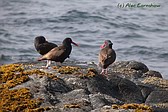
Jotes (Cabeza Negra y C. Roja) - Black & Turkey Vultures
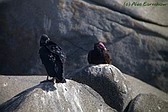
Rara - Rufous-tailed Plantcutter - Phytotoma rara
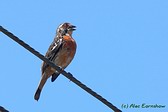


Cabecitanegra Austral - Black-chinned Siskin - Carduelis barbata (at Quintero)
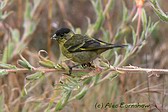
PHOTOS TAKEN AT REÑACA
Gaviotín Inca - Inca Tern - Larosterna inca
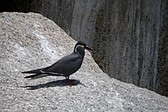
Piquero - Peruvian Booby - Sula variegata
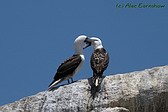
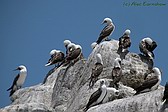
Pelicano - Peruvian Pelican - Pelicanus thagus



DAY 7 and 8 - Nothofagus forest around Vilches
Vilches is in the 7th Region. There seems to be no city center at all, as it basically consists of properties that stretch over some 15 km of gravel road that heads eastward up the hillside. The area is divided into three sections Vilches Bajo, Centro and Alto (low, middle and high).
We stayed at a bungalow in the "Los Nogales" tourist center, in Vilches Centro. The property has a number of attractive and very functional independent little houses, a main restaurant, gardens and a swimming pool with pool-side installations. They also have a hot tub and are building some sort of indoor pool. However, we used none of these, as we focalized on birds all day.
Behind the bungalows at "Los Nogales" there is an attractive native forest. The trees that gave shade to our bungalow were home to Thorn-tailed Rayaditos and White-throated Treerunners. Within the grounds I detected Chilean Flicker, Striped Woodpecker, Chilean Pigeon, Dark-bellied Cinclodes, Black-chinned Siskins, White-crested Elaenia, etc., but had no luck at all during my early morning photo walks. In the surrounding areas some forests have been converted to implanted pine.
During our first day we drove up the gravel road for about 25 minutes to visit a reserve in Vilches Alto, the "Área de Protección Vilches". Here we walked various trails and spent a magical moment surrounded by a family of Magellanic Woodpeckers, and then with a pair of Chestnut-throated Huet-huets.
Next day we returned to Vilches Alto, but this time entered the "Reserva Nacional Altos del Lircay", the Lircay being a river that runs from the cordillera down to the sea. The forest here is Nothofagus. The gates to the reserve open at 9 am and then you must do a 2 or 3-km drive uphill to the warden's office, where you pay an entrance fee and can be informed about the trails. You must leave the car here and must plan your day carefully, as the gates close again at 4 or 5 pm (depending on the bus service timetable, used by the staff to get back to their homes). You can of course enter the reserve earlier and leave later, and even camp along the trail, but this implies leaving your car behind at the entrance gates and adding the 2-3 km uphill walk to the reception - although this is probably not a big deal if you are prepared for a long hike, since hereafter the main circuit is also uphill! Doing the entire circuit could require 2 days or more to complete. One alternative is to go up on horseback, and arranging horses seems to be no problem as we saw several guides returning with their horses. We went up by car, paid, received instructions, and then did a short trail that goes by the long name of "Alewenmawida" where we expected to see Chucao Tapaculo (though we only got to hear their call) and Chestnut-throated Huet-huet, of which we saw 3 or 4, but they proved to be very skulking indeed. We then walked up a small section of the main trail and saw Green-backed Firecrown. I spent over an hour fruitlessly trying to improve my photos of Des Mur's Wiretail, which lived on a slope cavered with low bamboo. I had photographed these rather poorly a year before at Concepción, Chile and could do no better this time. Finally, after leaving the park and as we slowly drove down the very rocky and dusty gravel road lined with native forest, I heard a Striped Woodpecker, and this resulted in some decent photos.
VILCHES
ALTOS DEL LIRCAY
Carpintero Gigante - Magellanic Woodpecker - Campephilus magellanicus
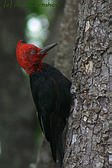
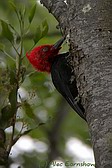
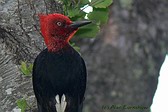
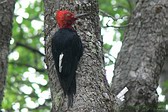
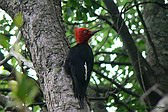
Carpintero Bataraz Grande - Striped Woodpecker - Picoides lignarius
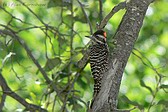
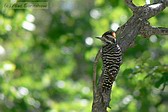

Colilarga - Des Mur's Wiretail - Sylviorthorhynchus desmursii
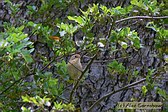
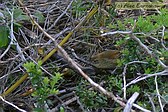
Huet-huet Castaño - Chestnut-throated Huet-huet - Pteroptochos castaneus - NEAR ENDEMIC
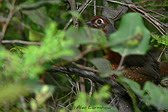
Cachudito Pico Negro - Tufted Tit-Tyrant - Anairetes parulus
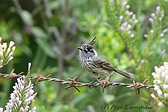
By the last day I had still not photographed White-crested Elaenia, which had been with us at virtually every stop over the last week. On the last morning in Chile, minutes before getting in the car to leave for Santiago, I got a reasonable photo.
We drove 300 km to Santiago airport without a hitch, dropped off the car (after a 1-hour wait during which a large Dutch family went though all the hiring procedures with great language difficulties, credit-card payment and all, only to undo it all later, as they realized the insurance policy did not suit them). We finally boarded the plane and returned home, leaving behind a memorable trip, which for various reasons nearly failed to materialize.Fiofío Silbón - White-crested Elaenia - Elaenia albiceps
OTHER ANIMALS
REPTILES
EL YESO
Liolaemus moradoensis
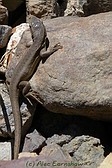
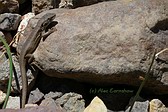
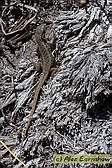
Lagarto de Lo Valdés - Liolaemus valdesianus
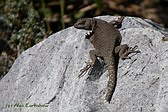
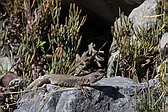


Lagartija Negro Verdosa - Blackish-green Lizard - Liolaemus nigroviridis
SQUAMATA : LIOLAEMIDAE - Conservation status: Vulnerable
ALTOS DEL LIRCAY - VILCHES
Lagartija Esbelta, Lagartija Iridiscente, Lagartija Bicolor - Thin Tree Iguana - Liolaemus tenuis
SQUAMATA : LIOLAEMIDAE
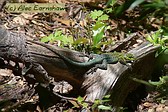
MAMMALS
Roca de Reñaca
Lobo marino - Southern Sea Lion - Otaria byronia
INSECTS & SPIDERS (from Vilches)
Chilean Magnifiscent Beetle - CARABIDAE: Ceroglossus chilensis colchaguensis
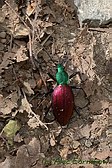
COLEOPTERA - BUPRESTIDAE: Polycesta costata
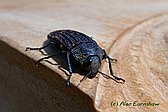
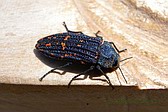
THERAPHOSIDAE: Homoeomma chilensis
Do drop me a line if you found this useful or if you have any queries I could help with - Alec Earnshaw
Main page of this site: www.fotosaves.com.ar